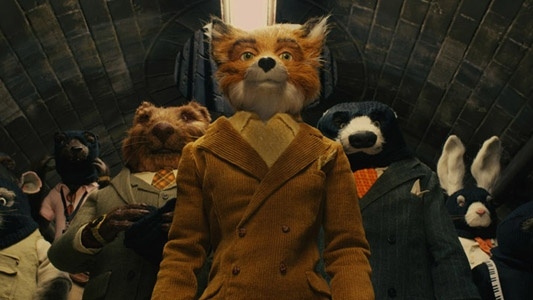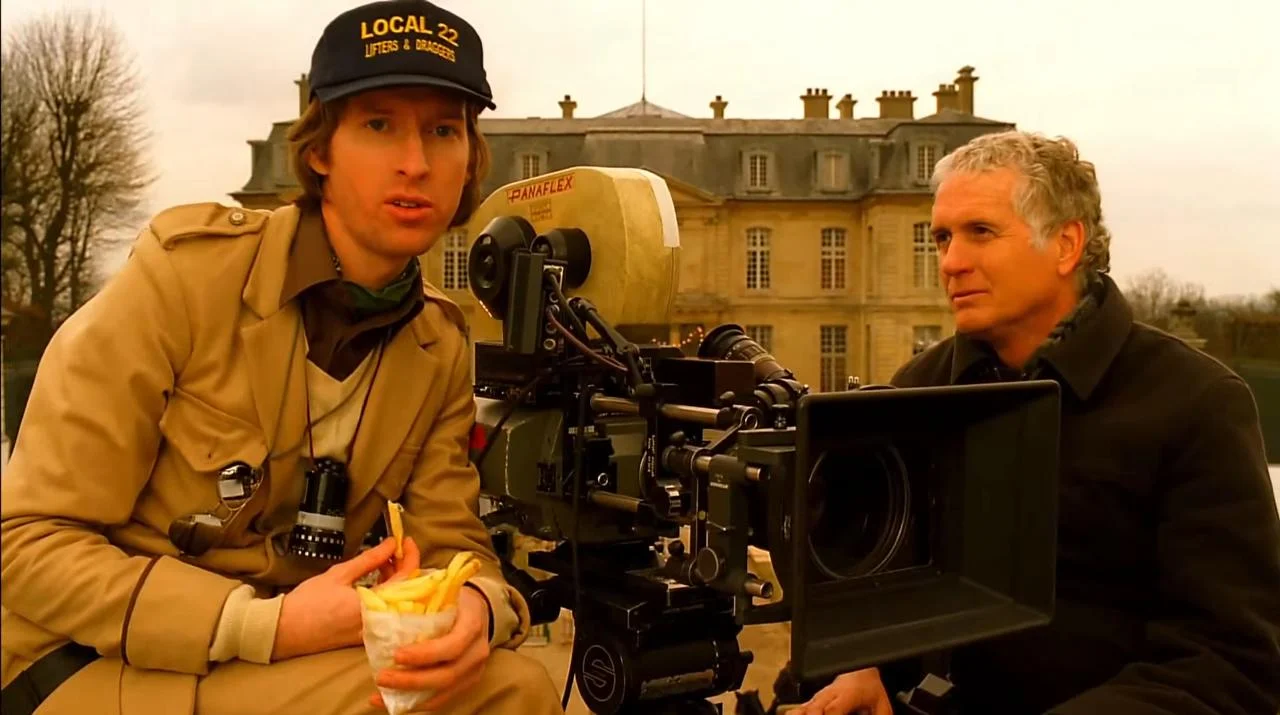"What a Beautiful Creature" : Wes Anderson's The Fantastic Mr. Fox
It’s rare for a director like Wes Anderson to make the jump into animation. His five previous films had been live action, but with the amount of care he put into production design and set decoration it makes sense that he would move into a medium where he could carefully control every single thing. No longer did he have to worry about things the physical limitations of his sets. With stop motion, he could build his sets exactly how he wanted them, move his characters exactly as he wanted to, and put his camera exactly where he wanted to.
Roald Dahl’s work was the perfect piece for Anderson to bring to his animated world. It contains many of the themes in Anderson’s previous work but exists in a world a step removed from our reality. Animals here live in a society of their own just outside of human society. Some are lawyers, some are real estate agents, some are handymen. Mr Fox (voiced by George Clooney) is a former chicken thief now living as a newspaper man after starting a family with his wife and son (Meryl Streep and Jason Schwartzmann, resepectively). Discontent with this safe life, Fox decides to pull one last job: stealing from the three richest, most vicious businessmen in town: Boggis, Bunce and Bean (one fat, one short, one lean). This doesn’t go as well as they planned, and when Boggis, Bunce and Bean seek retribution it extends to all animals in the area who have to move underground to avoid punishment.
Dahl’s story is fun, whimsical, and light. It also carries themes of family, growing up, and finding yourself. It’s the perfect jumping off world for Anderson to work in and he thrives in it. The character design is great, maintaining the features of the animals while also letting them fit into the world as a whole. The animation style allows him to show his full inventiveness; cutting into the ground to show tunnels being dug or going incredibly wide to show the map during the planning phase of the heist. The animation is detailed yet removed enough from reality that we aren’t bothered when there’s an arctic region a stone’s throw from a sunny road. The natural surreality of stop-motion helps disguise the subtle surreality of that’s often found in Anderson’s work.
The animation also disguises the cast, which is as star-studded as we’ve come to expect an Anderson film to be. Clooney’s voice is as recognizable as it always is, but Bill Murray, Willem Dafoe, and Michael Gambon all make appearance that slipped my attention until the credits rolled at the end. Big name actors don’t always work well doing voice work, but every character here is voiced with the same nuance I expect from a live action role. Some of that has to do with the talent of the actors, but there is something to be said of Anderson’s decision to record the dialogue “on location”. He took the actors to the woods, or an attic, or underground to help them feel more spontaneous.
Clooney is a standout among the cast. He’s an unusual choice for the lead of an Anderson movie. He’s not in the usual circle of actors the director likes to work with. He brings more energy to the role than you expect from the usually dry deliveries you find in these films. He fits well, though. The role is a little Ulysses Everett McGill, a little Danny Ocean: a family man who happens to be a lawbreaker who can come up with a plan at the drop of a hat. His enthusiasm is a welcome sight, and he tends to raise the energy of any scene that he’s in.
Clooney brings a lot of life to his character, and makes the world feel more lived in. The animation is a large part of that, as well. The characters move with such lightness and joy, bouncing around as they dance to Beach Boys tunes. Even though what we’re looking at is just models moved for every frame, there’s almost more life in this movie than any other in Wes Anderson’s filmography.










